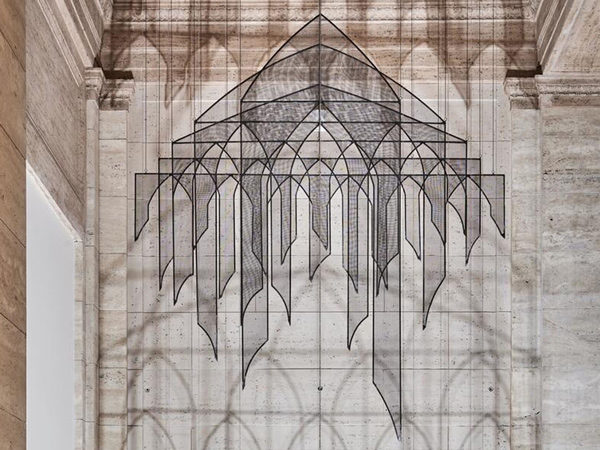Activity
Illuminated Manuscripts: The Sacred Art of Narration
Objective: Students will: 1.) Identify the format and elements of a sutra. 2.) Examine why sutras (the teachings of the Buddha) are important historical and religious documents. 3.) Analyze why the writing of sutras is considered an important religious act. 4.) Construct and illustrate an accordion book manuscript based on the sutra format used during the Goryeo dynasty (Korea).

Illuminated Manuscript Example
Common Core Standards:
W 6-8.3: Write narratives to develop real or imagined experiences or events using effective technique, relevant descriptive details, and well-structured event sequences.
Content Standards (California):
History/Social Science: 7.3.1: Describe the reunification of China under the Tang Dynasty and reasons for the spread of Buddhism in Tang China, Korea, and Japan.
Visual/Performing Arts: 6.3.3: Compare, in oral or written form, representative images or designs from at least two selected cultures; 6.5.3: Create artwork containing visual metaphors that express the traditions and myths of selected cultures; 7.3.2 Compare and contrast works of art from various periods, styles, and cultures and explain how those works reflect the society in which they were made; 9-12.3.1: Identify similarities and differences in the purposes of art created in selected cultures.
MATERIALS:
Buddhist Motifs and Designs and Visual Instructions (see “Downloads” above); indigo blue paper, poster board, gel pens, fine point liquid gold and silver markers, scissors, glue, and ruler.
OVERVIEW:
The religious fervor and opulence of the Goryeo dynasty can be seen in the intricately hand-copied sutras (the teachings of the Buddha) that date to this period. Korean monk-scribes were commissioned by royals, aristocrats, and individual high-ranking monks to write the sacred words of the Buddha by applying pigments of ground gold and silver to deep indigo–dyed mulberry paper. They began by pictorially narrating the sermons of the Buddha with key episodes within the sutra chapter on the frontispiece (first four sutra panels). The rest of the sutra comprised flowing calligraphy translating the Buddha’s teachings.
PROCEDURE:
- Introduce Buddhism and its influence on Korea’s Goryeo dynasty.
- Ask students why individuals would want to commission a sutra. You may want to discuss with students how Goryeo rulers believed that by worshiping the Buddha, the nation would be protected from foreign invasion.
- Discuss why hand-copied sutras were considered religious acts.
- Have students identify the format of a sutra and the materials used to make one.
- Have students compare and contrast the tradition of Korean Buddhist illumination with that of Christian illumination from Europe’s medieval period.
- Have students select a short story that holds special meaning for them.
- Have students write down the key events that take place in the short story and draw thumbnail sketches of how they would illustrate and compose these events in a compact manner.
- Have students cut out two 12 1/4″ x 4 1/4″ rectangles of poster board.
- Cut out two 13 1/4″ x 5 1/4″ rectangles of blue paper. Lay down, center, and glue each poster board rectangle on top of a piece of blue paper. Cut off the corners at an angle.
- Have students glue the flaps of blue paper over the sides of each poster board rectangle. These will be the cover and back of their sutra booklet.
- Have students cut out a 12″ x 34″ rectangle of blue paper. If you do not have paper this length, small rectangles (12″ x 5 1/4″—the size of one sutra panel with a little extra to glue to the neighboring panel) may be cut and glued together.
- Have students fold the long blue paper rectangle back and forth like an accordion. Next, glue the cover and back of the booklet to either end. Notice that when the sutra is laid flat, you should be able to see the cover and back of the booklet.
- Using a pencil, have students lightly sketch out decorative designs on the cover and back of the booklet and write the title of the short story on the front cover.
- Next, have students draw a decorative border around the first four panels (starting from right to left). This forms the border of the frontispiece. Using pencil, roughly sketch key scenes from your short story.
- On the remaining panels, have students write a summary of the short story in decorative lettering.
- Using gel pens and gold and silver liquid markers, have students draw over their sketches making corrections as necessary. Tell students to feel free to decorate the entire frontispiece panels with abstract designs. Use the Buddhist Motifs and Designs worksheet (above) for ideas.






